This post may contain affiliate links. Please read our disclosure policy.
I perfected this apple bundt cake through multiple rounds of testing, adjusting moisture, structure, and apple size for flawless results. The ¼-inch apple cubes give you distinct bites without compromising the tender crumb. With my tested tips – like greasing and flouring your pan, you’ll bake a bundt that releases beautifully and tastes even better.
This was one of the best cakes that I’ve ever made from an internet recipe. Flavorful, light and not too sweet and topped with a delicious glaze, it was the perfect way to bake with apples gathered from the neighbors tree this fall. Took it to the neighbors home for a kaffe and kuchen afternoon and it was a huge hit with everyone. Do not hesitate to bake this one for yourself as you will not be sorry!
-Leslie
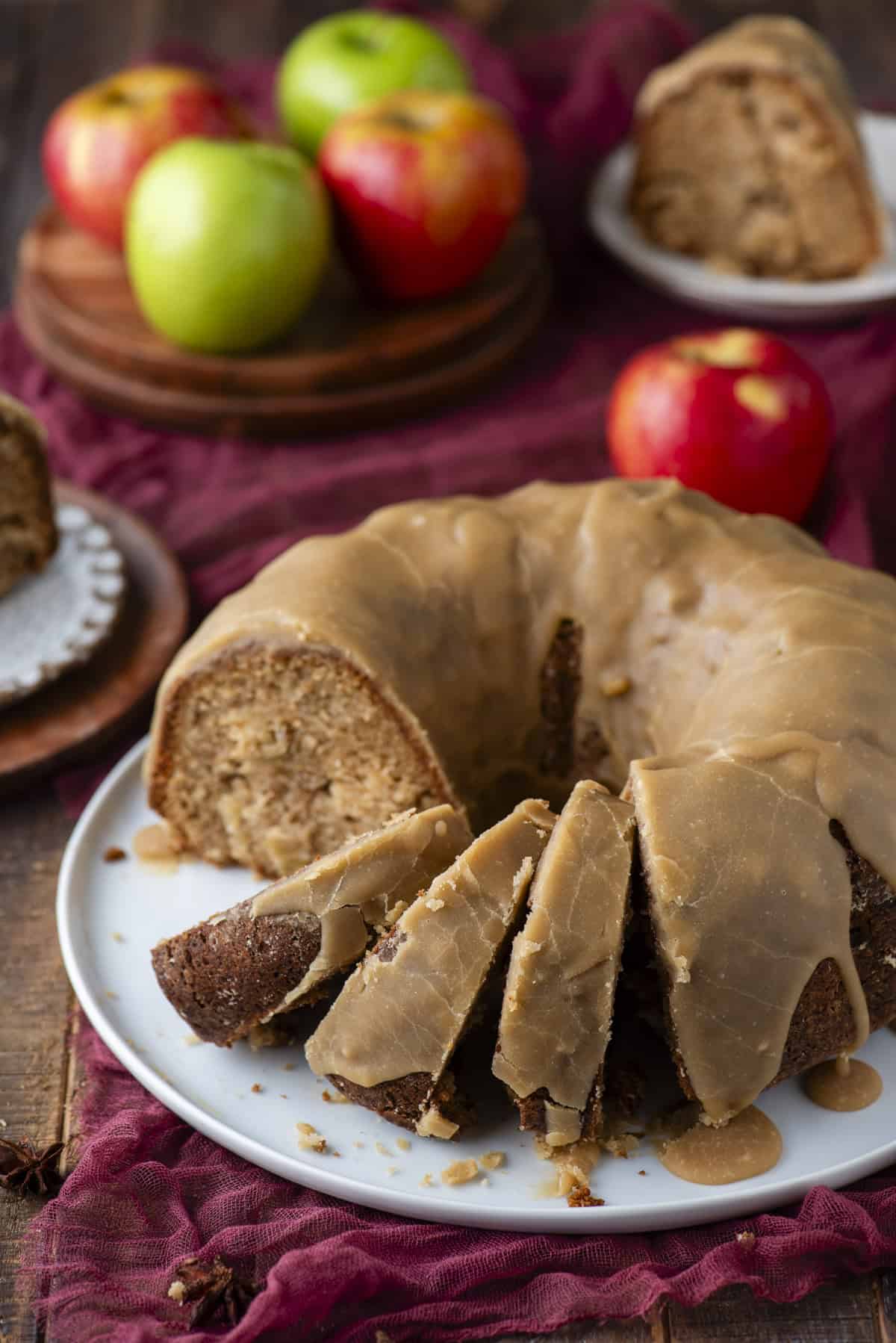
Apple Bundt Cake Recipe
When it comes to baking with apples, the challenge isn’t just getting great flavor, it’s controlling the moisture so your cake bakes up with a perfect crumb instead of collapsing into a soggy mess.
This apple bundt cake was born from my well-loved apple cake recipe, but I knew the original needed more structure to work in a bundt pan. I removed the milk entirely, increased the flour for a sturdier crumb, and adjusted the leavening to give it the lift a bundt cake needs without creating gaps or dense spots.
Apples can be unpredictable in cake. Their size and moisture content can make or break the texture. To get this recipe just right, I tested both ½-inch and ¼-inch apple pieces, baking multiple rounds to compare results.
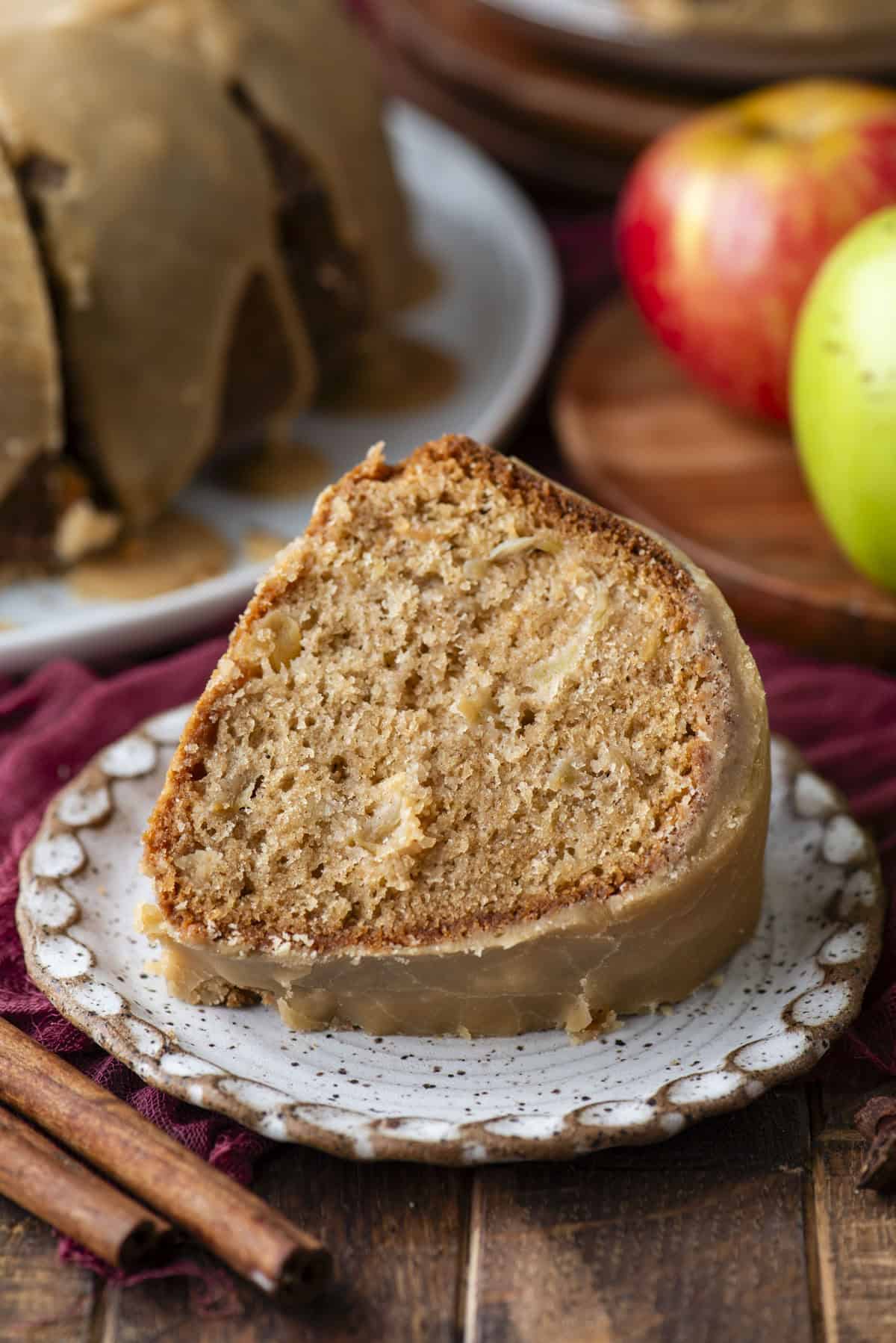
The larger chunks created pockets where the batter stayed too wet, almost raw in places. The smaller ¼-inch cubes were the clear winner, small enough to distribute evenly, but big enough to provide distinct bites of apple that hold their shape after baking.
One more hard-earned tip? Grease and flour your bundt pan – every time! The first time I tested this cake, I only greased the pan and watched in horror as half my beautiful bundt stayed behind. It tasted amazing, but looked like a Pinterest fail in 3D. Save yourself the heartbreak (and the spatula scraping) and give your pan the full nonstick treatment.
After these refinements, the result is a cake that’s sturdy enough to release beautifully from the bundt pan, yet still tender and moist with apple flavor in every bite.
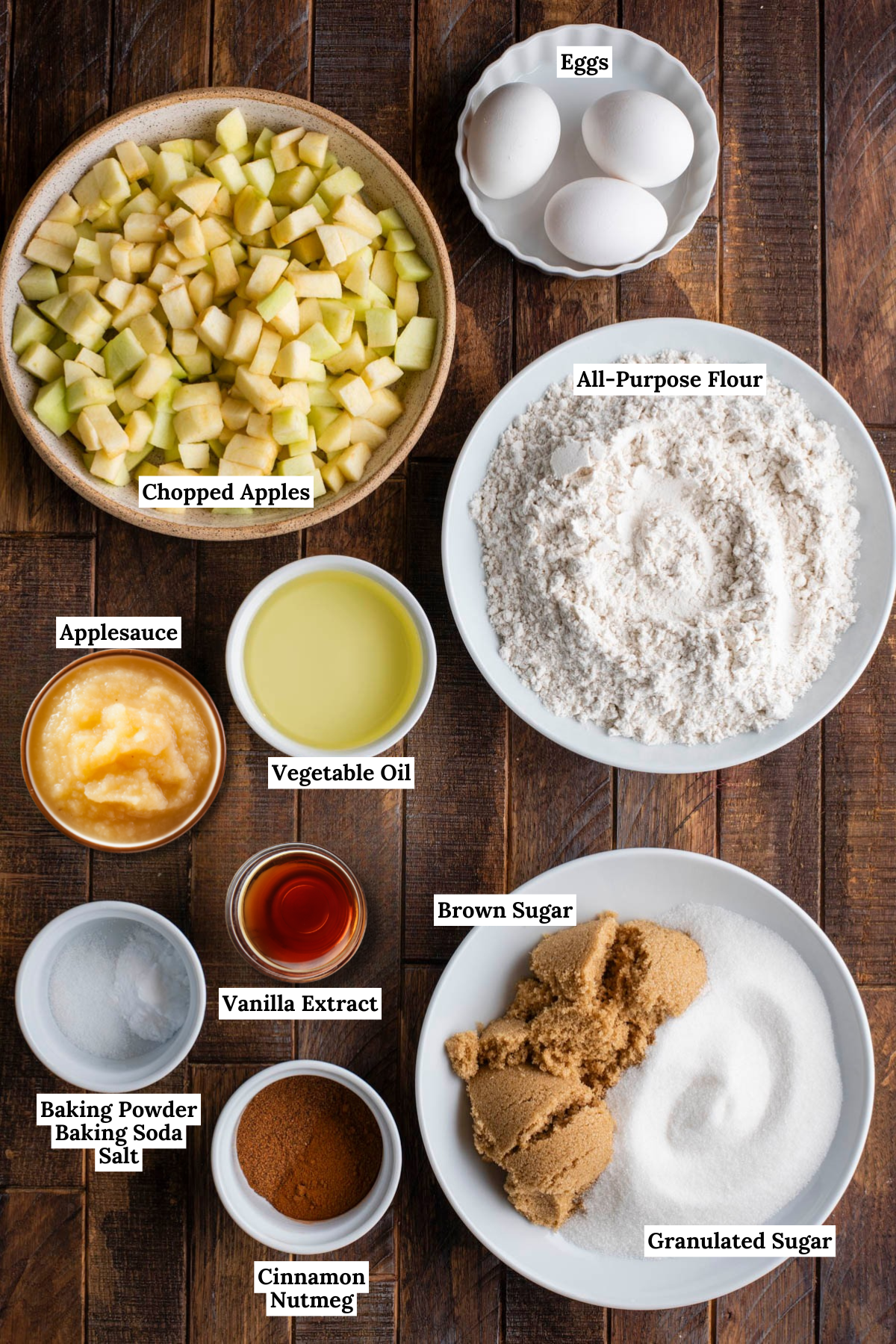
How to Make this Apple Bundt Cake Recipe
Whether it’s apple season or you just have some fresh apples and a craving, this bundt cake recipe never fails. Get the full recipe with ingredients in the recipe card below. Here is the easy-to-follow process:
For the Cake
- Prep oven and bundt pan. Preheat the oven to 350°F. Generously grease with butter and flour a 10 to 12 cup bundt pan, making sure to get into all the crevices.
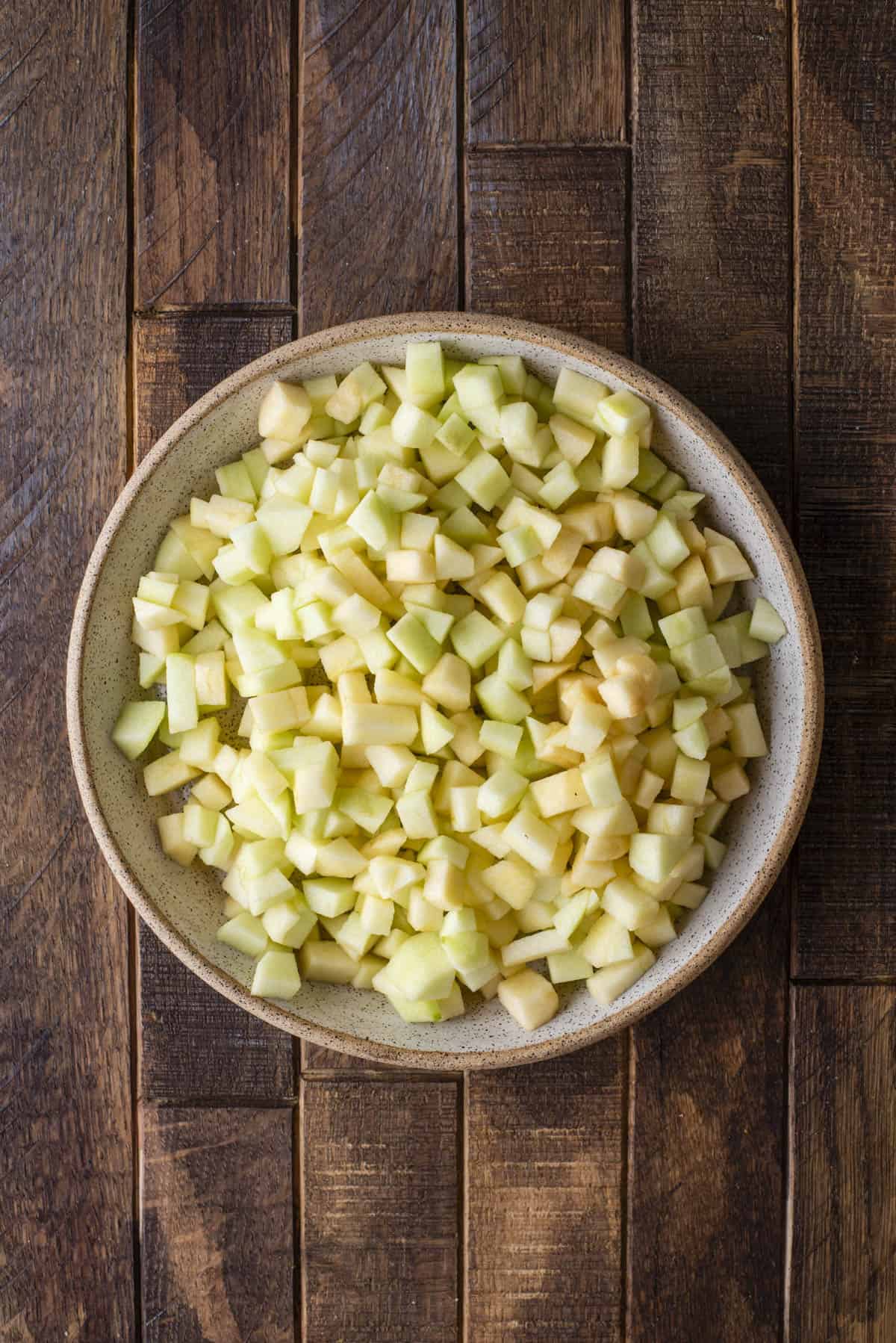
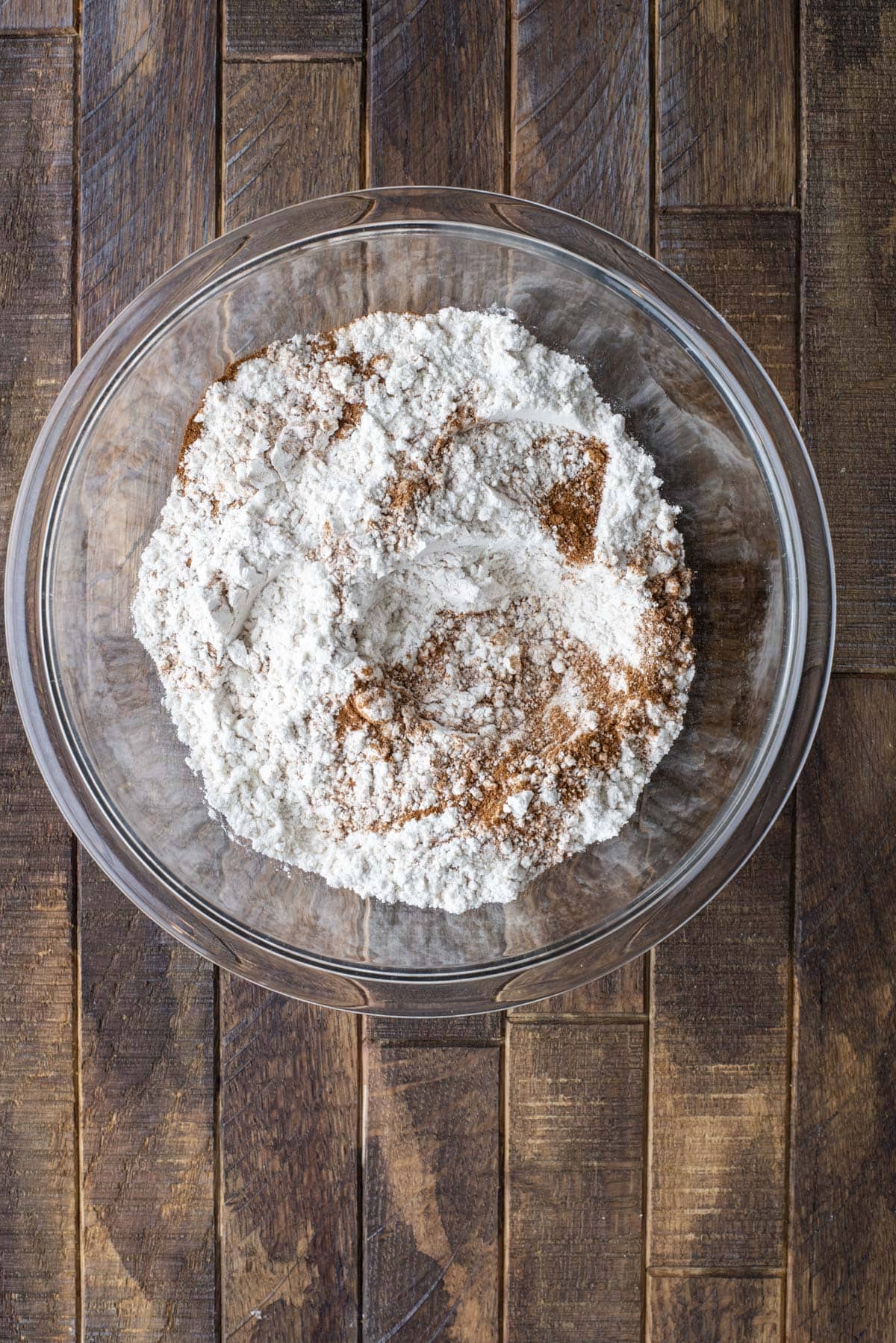
- Prep apples. Peel and core the apples. Dice them into ¼ inch chunks, aiming for even pieces to ensure consistent baking throughout the cake. You’ll need about 2.5-3 cups total, which is roughly 285-315 grams. If you prefer larger apple chunks, cut them into ½ inch pieces.
- Combine dry ingredients. In a medium bowl, combine flour, baking powder, baking soda, salt, cinnamon, and nutmeg. Set aside.
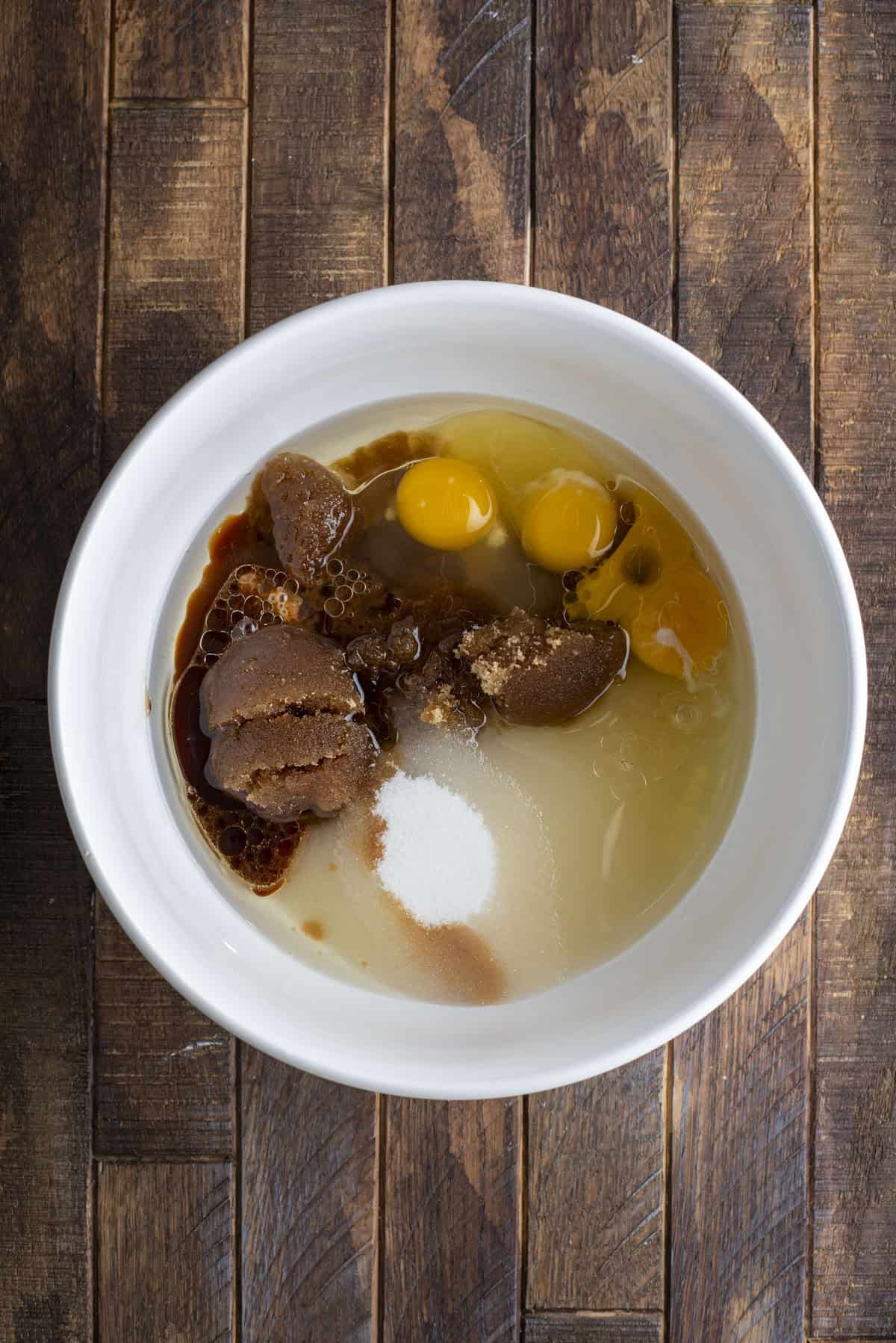
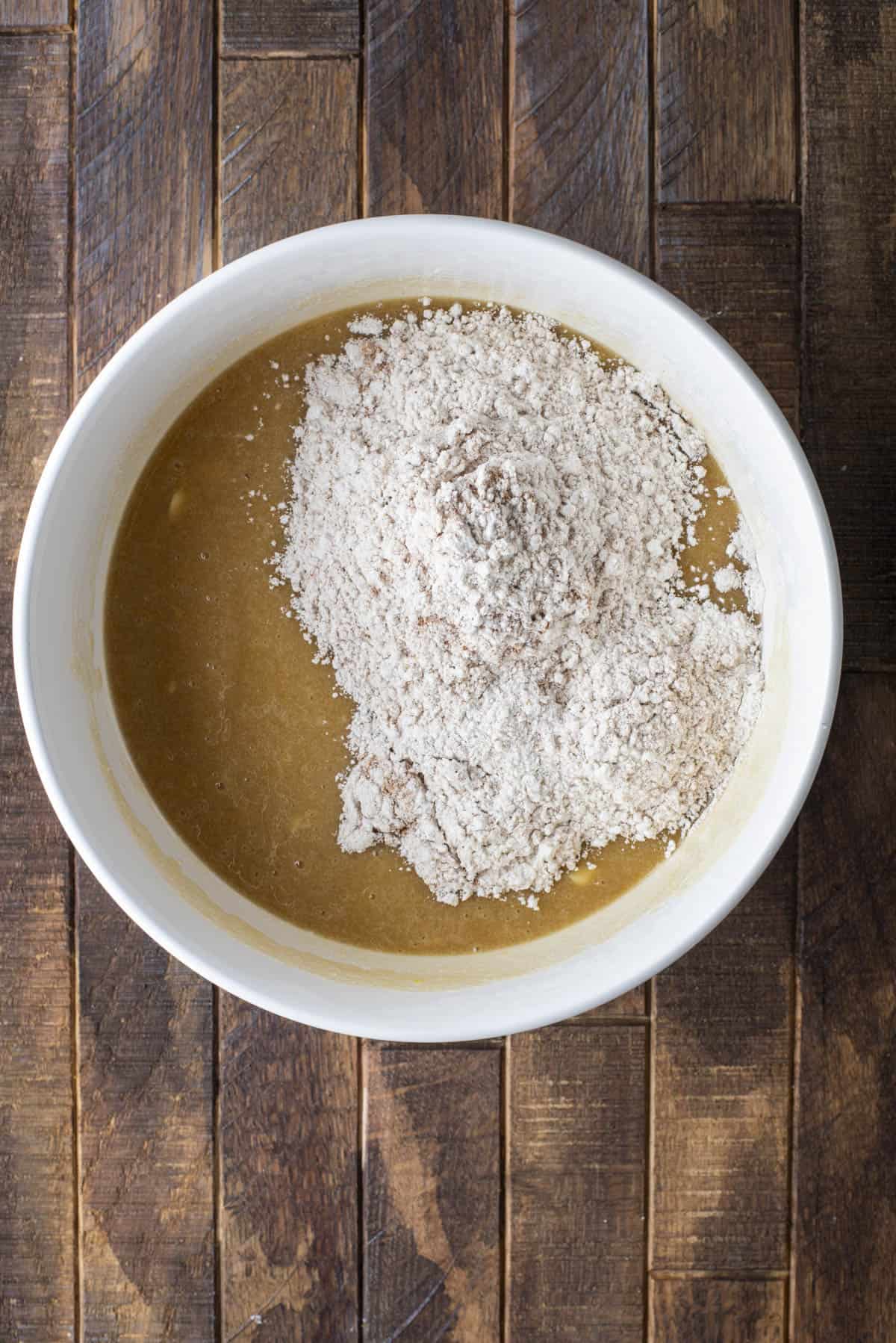
- Combine wet ingredients. In a large mixing bowl, whisk together the granulated sugar, brown sugar, vegetable oil, applesauce, eggs, and vanilla extract until well combined.
- Begin combining wet and dry ingredients. Add half of the dry ingredients to the wet ingredients, mixing just until combined.
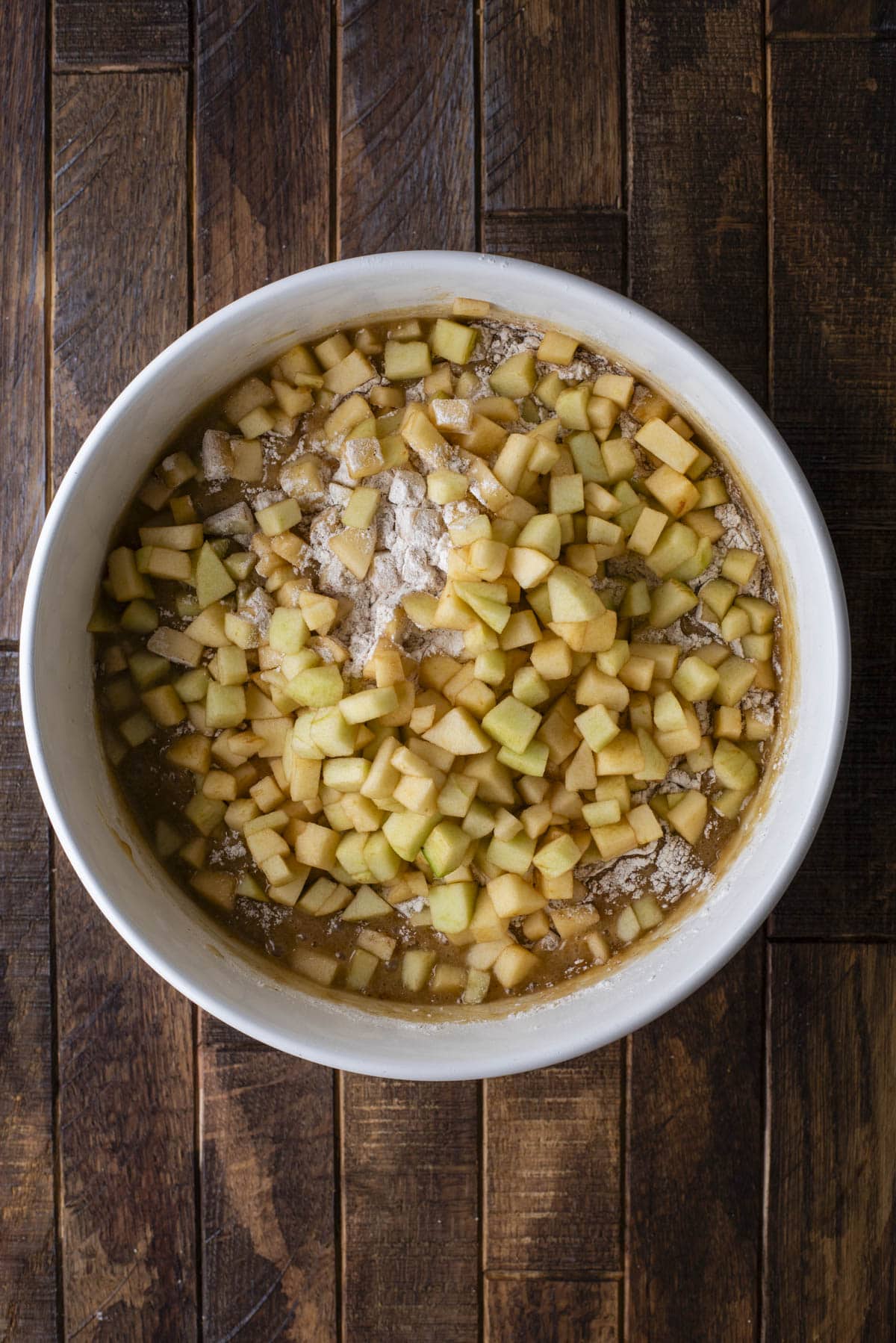
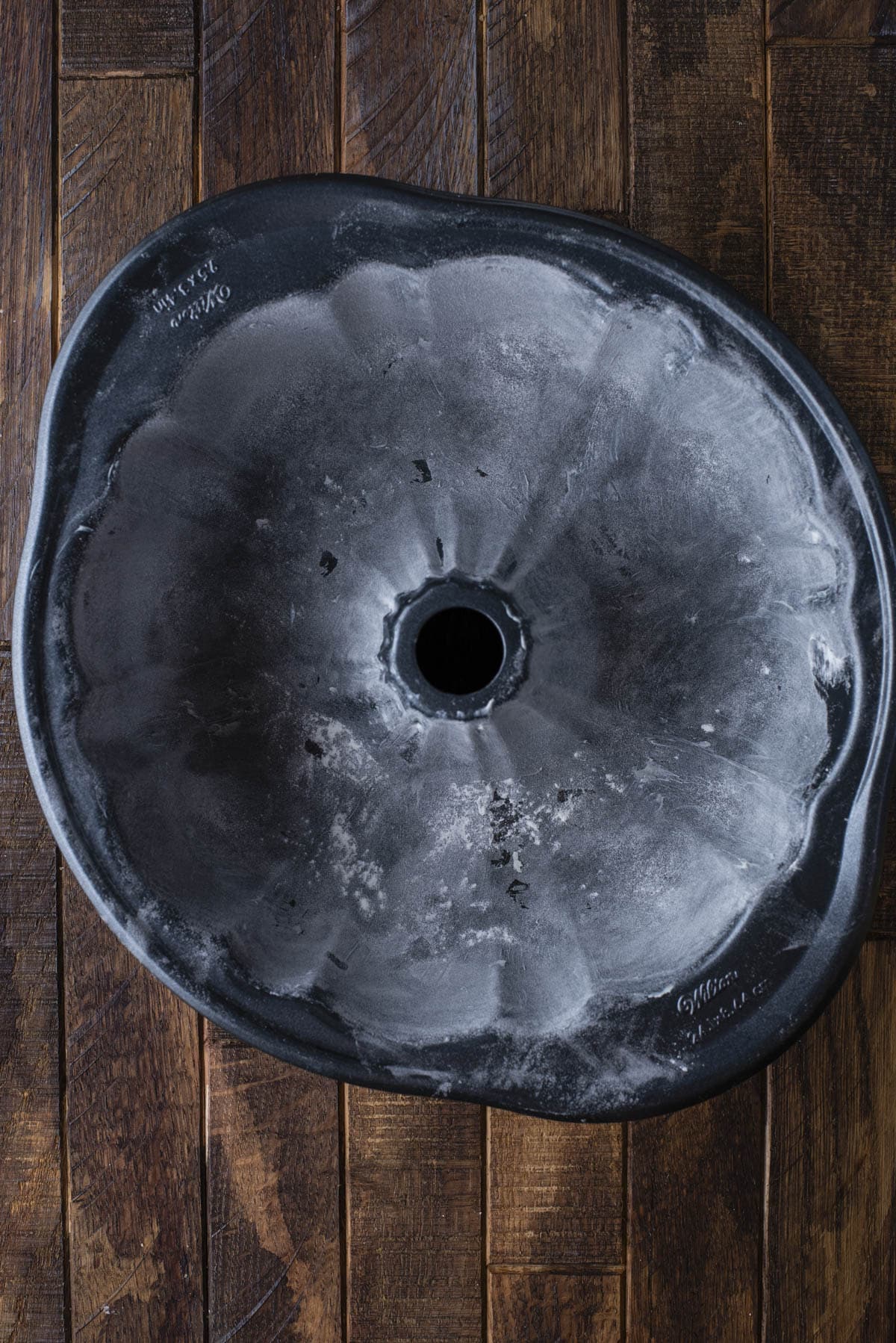
- Finish combining ingredients. Add in the remaining dry ingredients and diced apples, mixing just until combined.
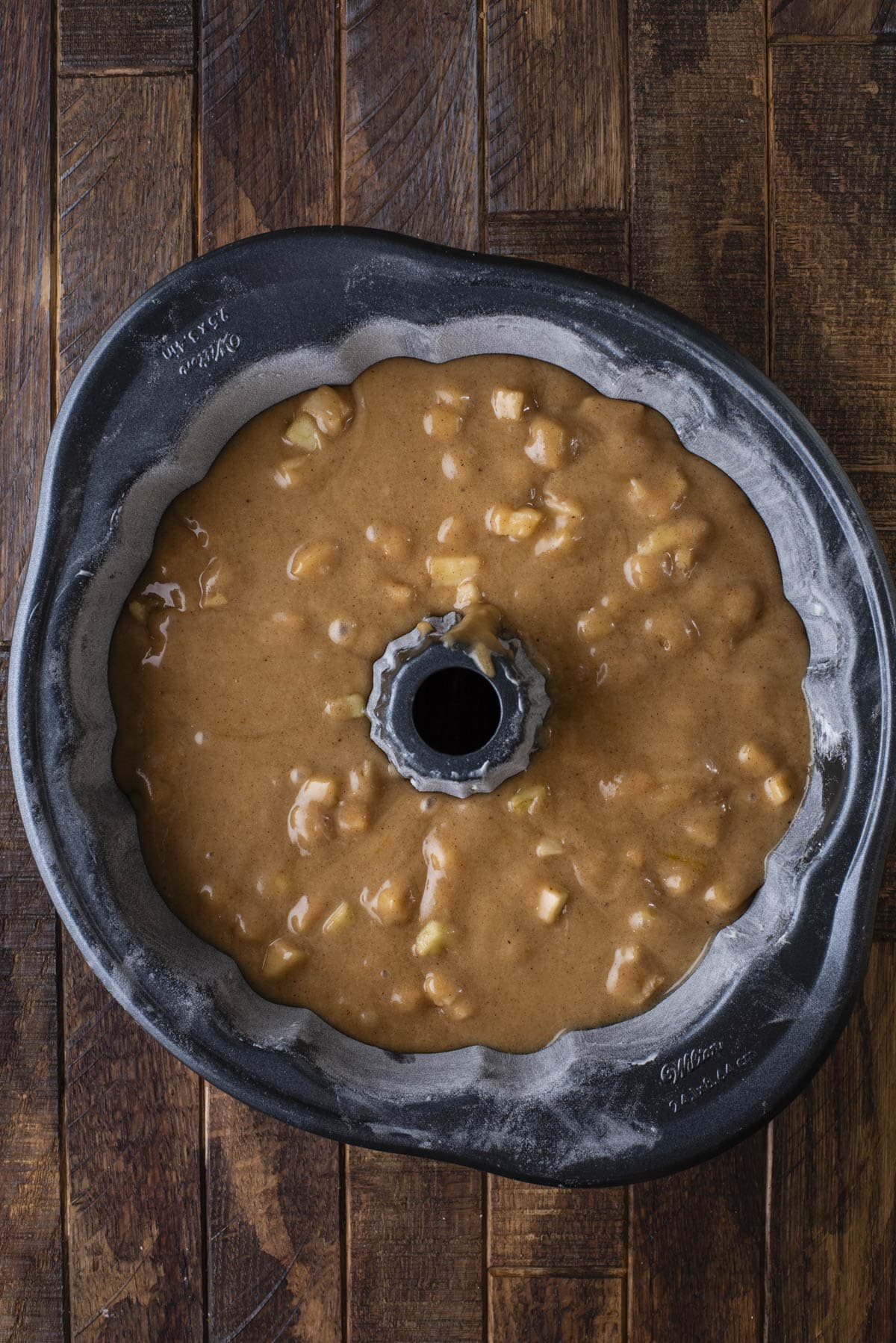
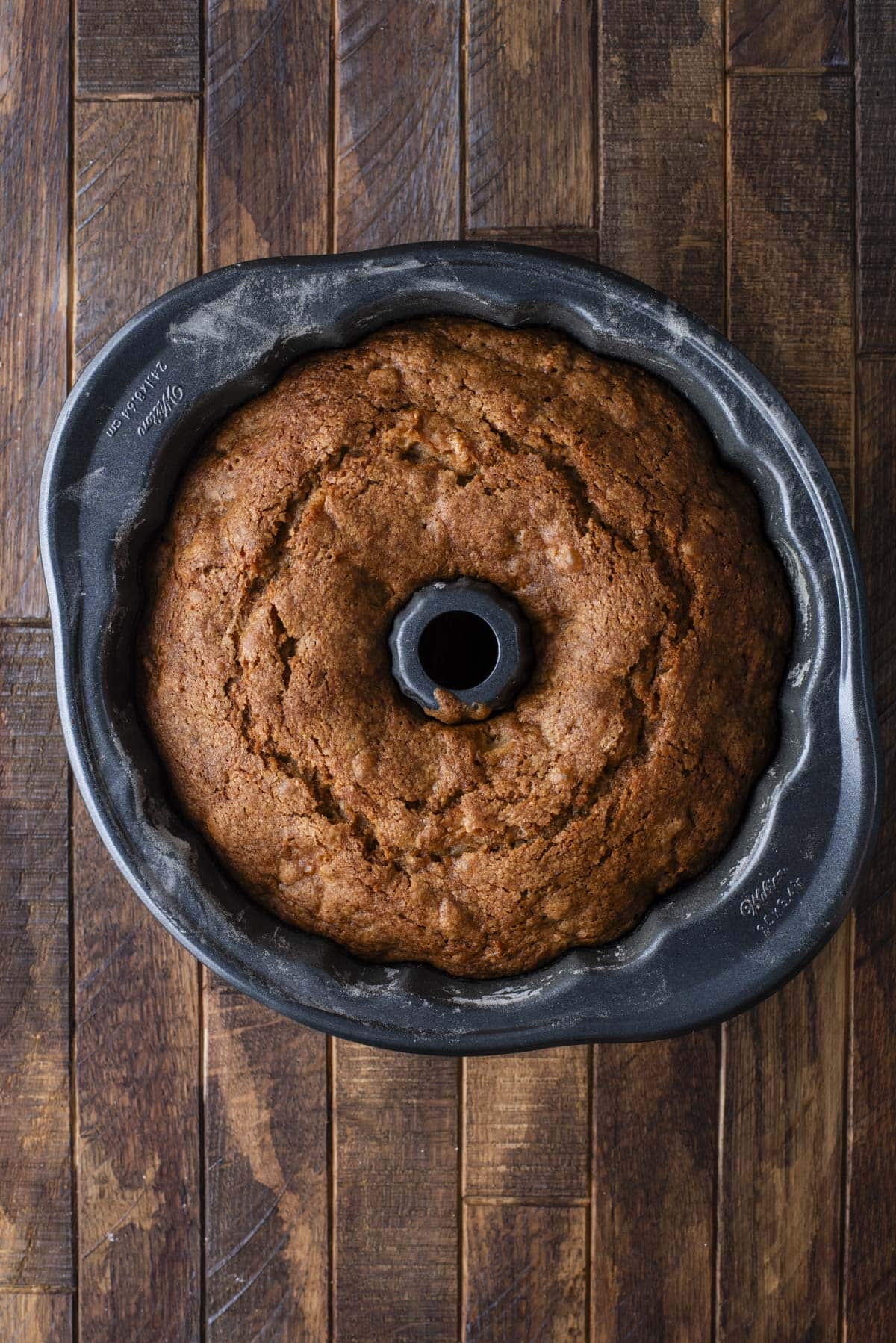
- Transfer batter. Pour the batter into the prepared bundt pan and smooth the top with a spatula.
- Bake. Bake for 60 minutes in the preheated oven, then check the top of the cake. If it’s browning too quickly, loosely cover it with aluminum foil. Continue baking for an additional 10 to 20 minutes, for a total of up to 70-80 minutes, or until a toothpick inserted in the center comes out clean or with a few moist crumbs. The internal temperature of a fully baked Bundt cake should be between 200°F and 210°F.
- Cool. Allow the cake to cool in the pan for 15 to 20 minutes, then carefully invert onto a wire rack to cool completely.
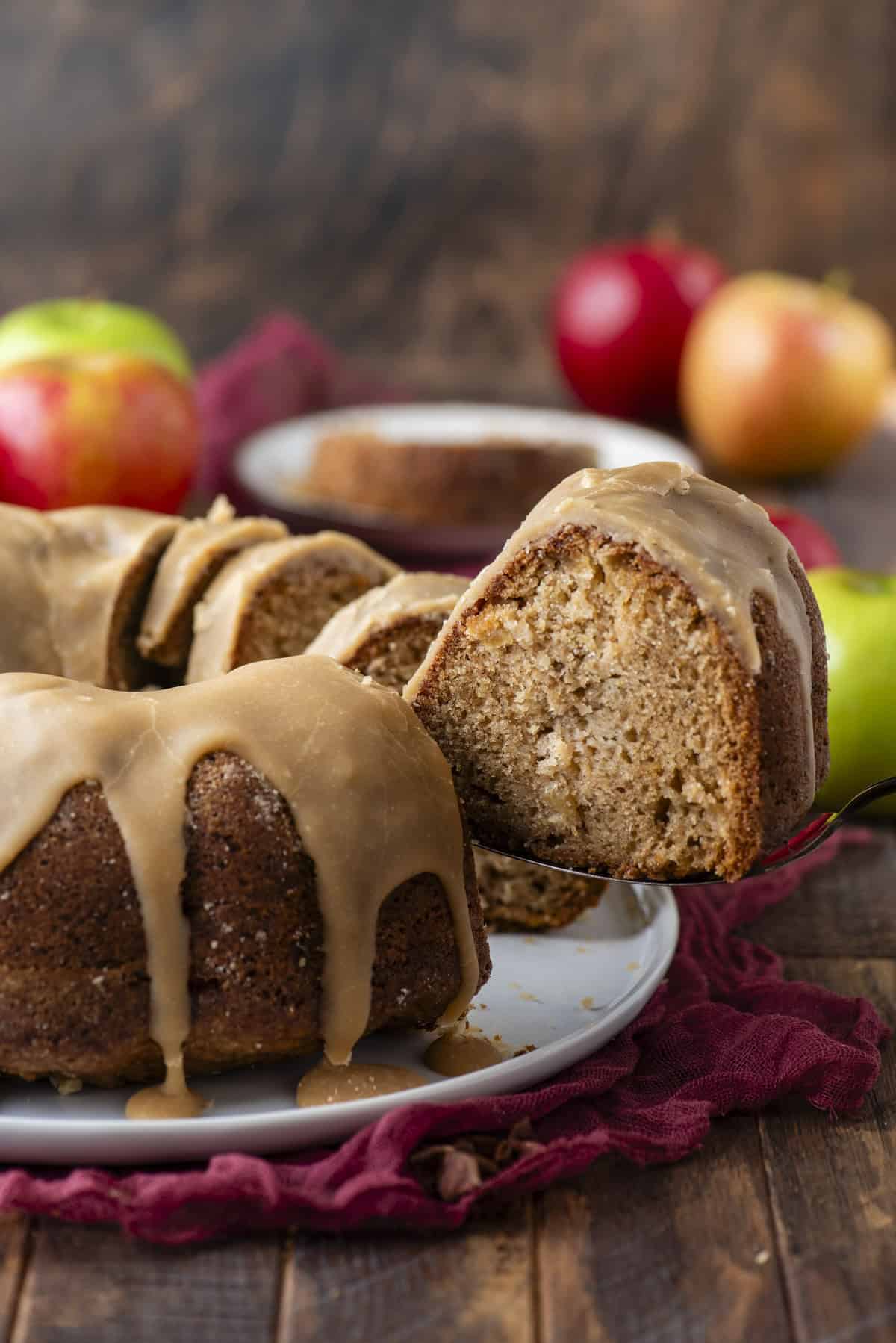
For the Brown Sugar Glaze
- Sift the powdered sugar. Set aside.
- Begin combining and heating ingredients. In a small saucepan over medium heat, combine the brown sugar, butter, and milk.
- Stir. Stir continuously until the butter melts and the mixture comes to a gentle boil.
- Boil. Continue boiling for 1 minute, stirring often.
- Mix in powdered sugar. Remove from the heat and whisk in the sifted powdered sugar until smooth.
- Cool and pour over cake. Let the glaze cool for 3-4 minutes, stirring occasionally. It will thicken slightly as it cools. Don’t wait too long, or it will become too thick to pour smoothly. Once ready, pour over the cake in one single motion. Pouring the glaze in sections will cause the glaze to look “layered”.
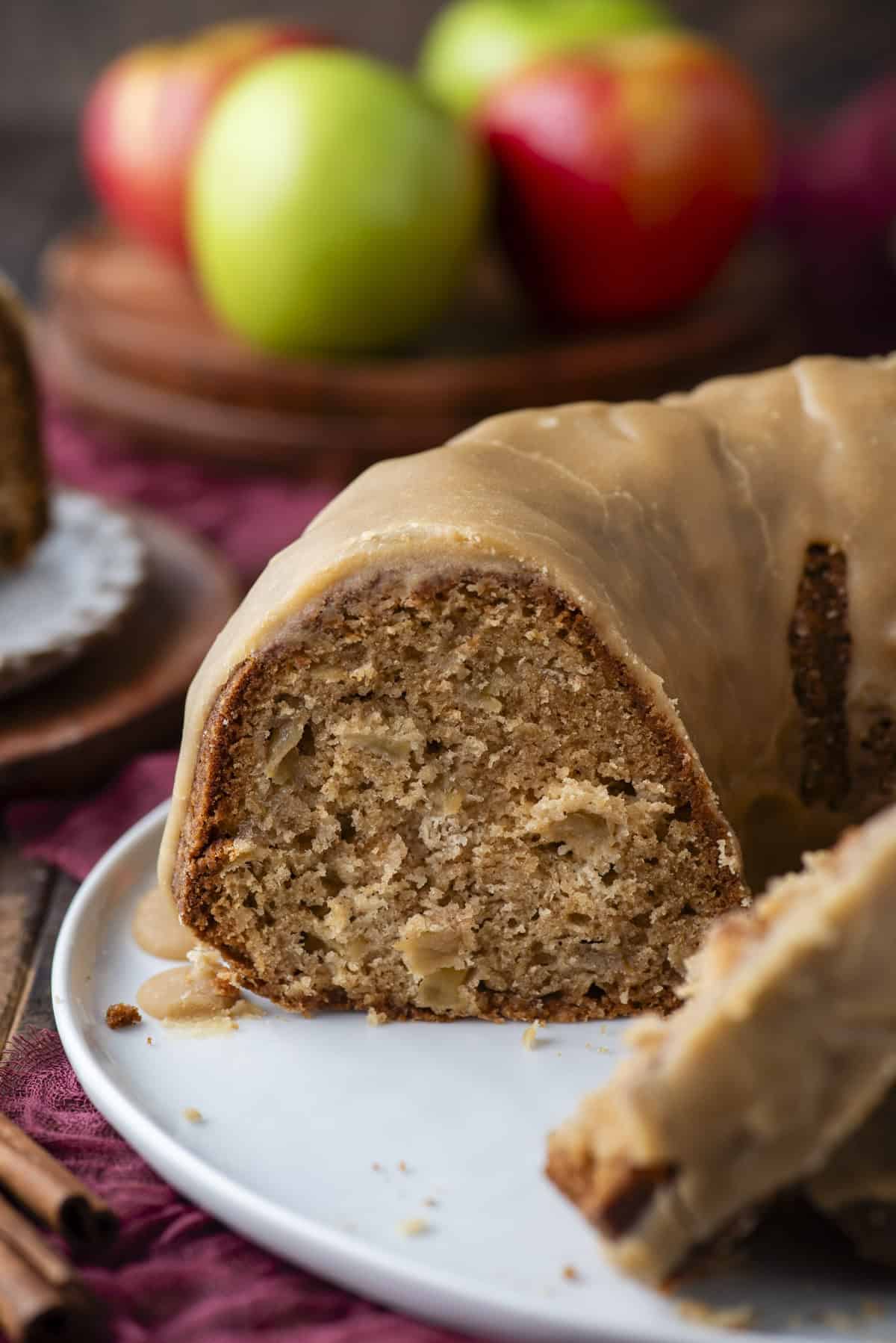
Best Apples for Apple Bundt Cake
Firm varieties like Honeycrisp, Granny Smith, Fuji, or Jonagold are great for apple cakes because they won’t turn mushy while baking. Tart apples work well to balance the sweetness of the brown sugar glaze. Granny Smith may be my favorite apples for this recipe because they add a tangy contrast, while Honeycrisp and Fuji bring natural sweetness and juiciness. For the best flavor and texture, try mixing a couple of varieties, which creates layers of apple flavor.
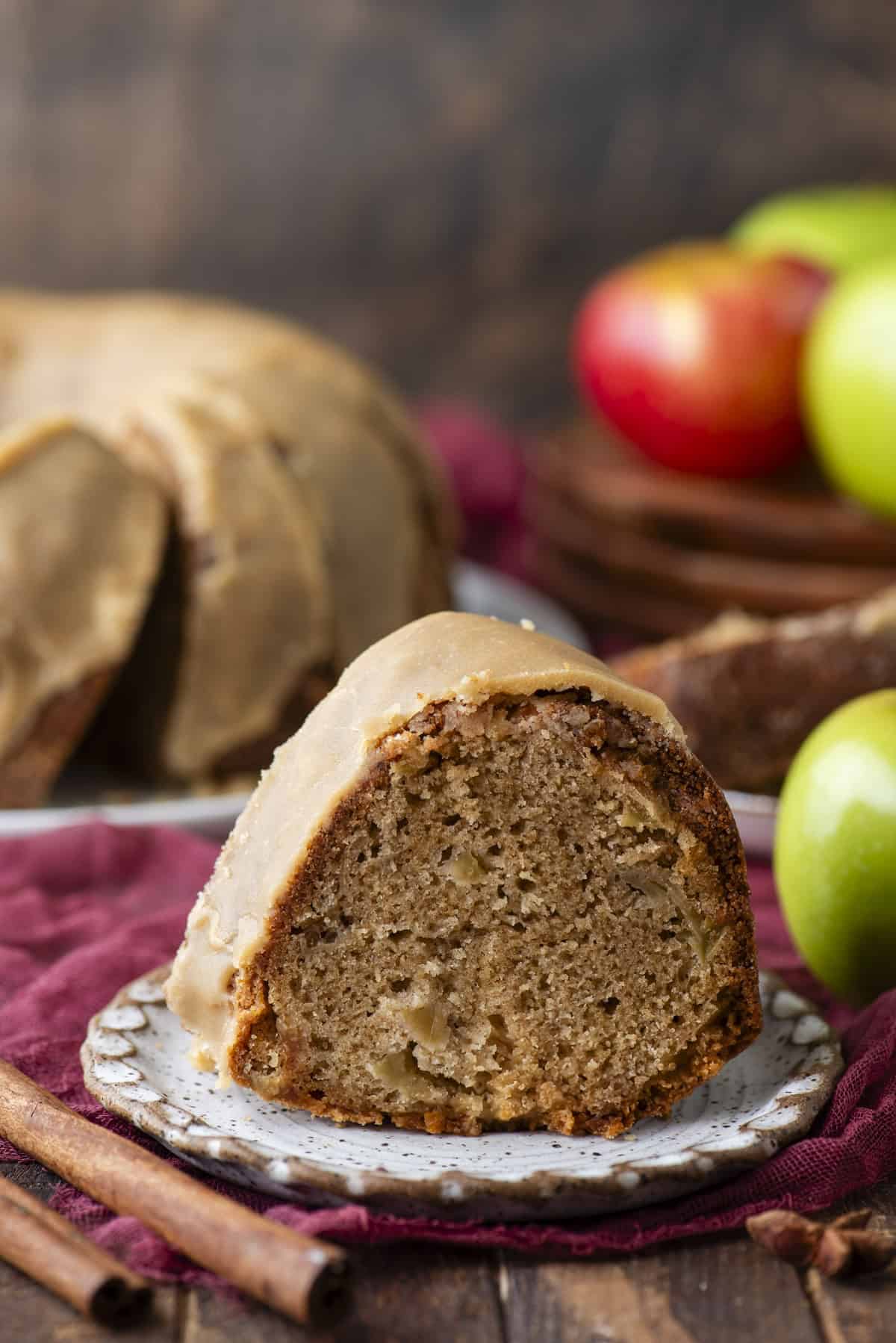
Apple Bundt Cake Storage
Store leftover cake in an airtight container at room temperature for 2-3 days. Be sure to let it cool completely before enclosing in a container or wrapping it. You can use toothpicks to keep plastic wrap from touching the top of the cake, which could mess up your glaze.
More Bundt Cake Recipes:
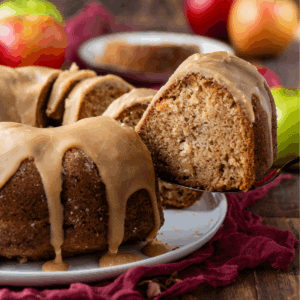
Tap stars to rate!
Apple Bundt Cake
Ingredients
Cake
- 3 ½ cups (420g) all purpose flour
- 1 ½ tsp baking powder
- 1 ½ tsp baking soda
- ½ tsp salt
- 2 tsp cinnamon
- ½ tsp ground nutmeg
- 1 cup (198g) granulated sugar
- 1 cup (213) brown sugar
- ¾ cup (149g) vegetable oil
- 1 cup (255g) applesauce, sweetened or unsweetened
- 3 large eggs
- 2 tsp vanilla extract
- 2 ½-3 cups diced apples, cut into ¼-inch chunks
Brown Sugar Glaze
- ½ cup (107g) brown sugar
- ¼ cup (57g) unsalted butter
- 2 Tbsp milk
- ⅔ cup (76g) powdered sugar, sifted

Instructions
Cake
- Preheat the oven to 350°F. Generously grease with butter and flour a 10 to 12 cup bundt pan, making sure to get into all the crevices.
- Peel and core the apples. Dice them into ¼ inch chunks, aiming for even pieces to ensure consistent baking throughout the cake. You’ll need about 2.5-3 cups total, which is roughly 285-315 grams. If you prefer larger apple chunks, cut them into ½ inch pieces.
- In a medium bowl, whisk together the flour, baking powder, baking soda, salt, cinnamon, and nutmeg. Set aside.3 ½ cups (420g) all purpose flour, 1 ½ tsp baking powder, 1 ½ tsp baking soda, ½ tsp salt, 2 tsp cinnamon, 1/2 tsp ground nutmeg
- In a large mixing bowl, whisk together the granulated sugar, brown sugar, vegetable oil, applesauce, eggs, and vanilla extract until well combined.1 cup (198g) granulated sugar, 1 cup (213) brown sugar, ¾ cup (149g) vegetable oil, 3 large eggs, 2 tsp vanilla extract, 1 cup (255g) applesauce
- Add half of the dry ingredients to the wet ingredients, mixing just until combined.
- Add in the remaining dry ingredients and diced apples, mixing just until combined.2 ½-3 cups diced apples
- Pour the batter into the prepared bundt pan and smooth the top with a spatula.
- Bake for 60 minutes, then check the top of the cake. If it’s browning too quickly, loosely cover it with aluminum foil. Continue baking for an additional 10 to 20 minutes, for a total of up to 70-80 minutes, or until a toothpick inserted in the center comes out clean or with a few moist crumbs. The internal temperature of a fully baked Bundt cake should be between 200°F and 210°F.
- Allow the cake to cool in the pan for 15 to 20 minutes, then carefully invert onto a wire rack to cool completely.
Brown Sugar Glaze
- Sift the powdered sugar. Set aside.
- In a small saucepan over medium heat, combine the brown sugar, butter, and milk.½ cup (107g) brown sugar, ¼ cup (57g) unsalted butter, 2 Tbsp milk
- Stir continuously until the butter melts and the mixture comes to a gentle boil.
- Continue boiling for 1 minute, stirring often.
- Remove from the heat and whisk in the sifted powdered sugar until smooth.⅔ cup (76g) powdered sugar
- Let the glaze cool for 3-4 minutes, stirring occasionally. It will thicken slightly as it cools. Don’t wait too long, or it will become too thick to pour smoothly. Once ready, pour over the cake in one single motion. Pouring the glaze in sections will cause the glaze to look “layered”.
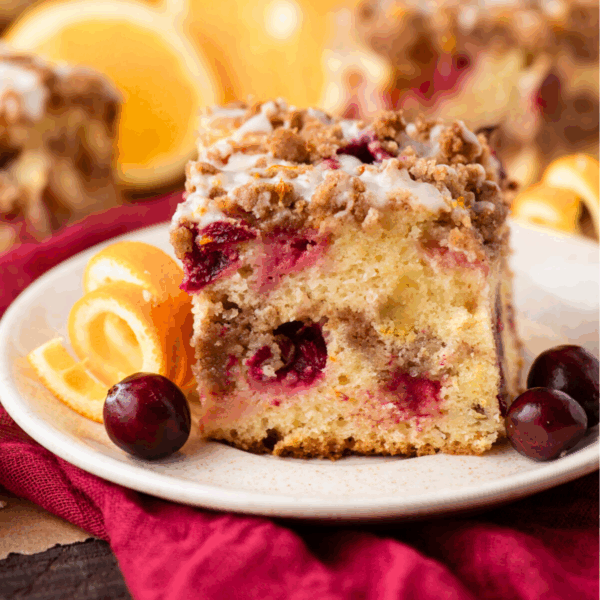
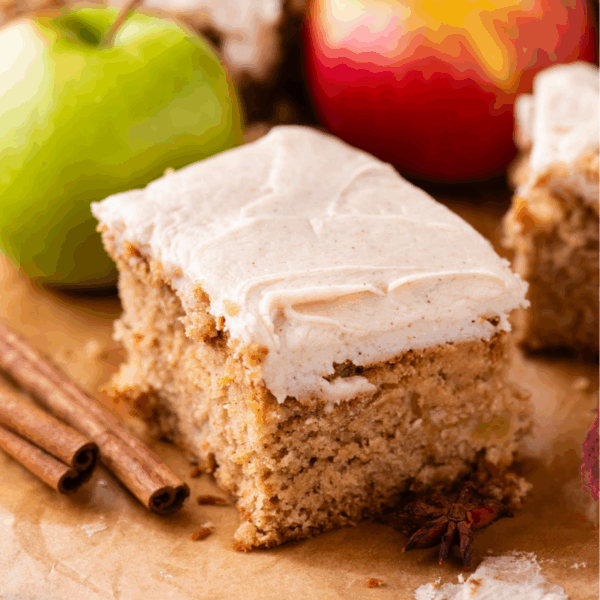
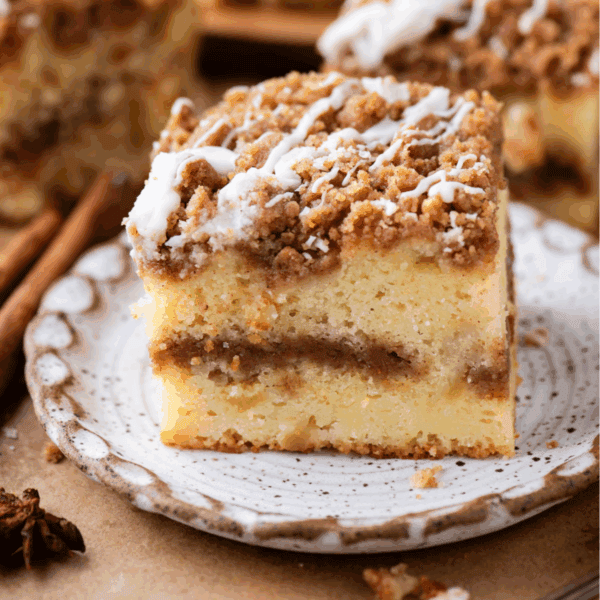
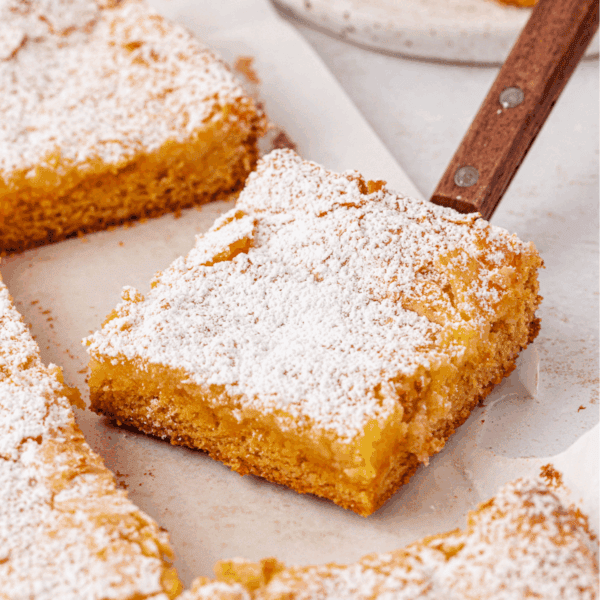






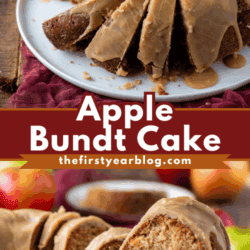
Made this for a family dinner and it was a huge hit! Definitely will have to make it again. Thanks for the recipe.
I don’t have a bundt cake pan. Would a differnt type pan work?
You can follow the recipe for apple cake (made in a 9×13 inch pan) here!
What degrees do you cook the cake? I may have just overlooked it.
Thank you,
Jeane Goodwin
[email protected]
350°F!
This was one of the best cakes that I’ve ever made from an internet recipe. Flavourful, light and not too sweet and topped with a delicious glaze, it was the perfect way to bake with apples gathered from the neighbour’s tree this fall. Took it to the neighbour’s home for a kaffe and kuchen afternoon and it was a huge hit with everyone. Do not hesitate to bake this one for yourself as you will not be sorry!
What can be substituted for apple sauce
You could substitute apple butter.